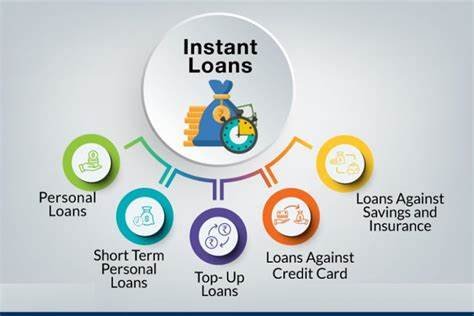Understanding Graduate Student Loans
Graduate student loans are specific financial aids designed to assist students pursuing advanced degrees such as master’s or doctoral programs. Offering a range of options, these loans can significantly alleviate the financial burdens associated with higher education. Generally, graduate student loans are divided into two primary categories: federal and private loans. Each type presents distinct features, eligibility criteria, and repayment options that can greatly impact a graduate student’s financial experience.
Federal student loans, funded by the government, often offer more favorable terms compared to private loans. Within this category, there are different types, such as Direct Unsubsidized Loans and Grad PLUS Loans. Unsubsidized loans allow students to borrow without the need for demonstrated financial need, although interest accrues while the borrower is still in school. Grad PLUS Loans, on the other hand, can cover additional expenses beyond the cost of attendance, but they require a credit check and have higher interest rates. Federal loans typically come with various borrower protections, including income-driven repayment plans and potential loan forgiveness programs.
Private loans, which are provided by financial institutions, offer another route for graduate students but generally come with less flexibility. These loans often require a creditworthy cosigner, especially for borrowers with limited credit history. Terms and interest rates for private loans can vary significantly, depending on the lender and the borrower’s credit profile. It is crucial for prospective graduate students to carefully compare the benefits and drawbacks of both federal and private loans before making a decision.
Understanding these loan types and their implications is essential for managing educational debt effectively. Unlike undergraduate loans, graduate student loans typically allow for larger borrowing limits, reflecting the increased costs associated with advanced education. Thus, comprehending the graduate student loan landscape is a vital step toward informed financial planning for graduate studies.
Federal vs. Private Graduate Student Loans
When considering funding options for graduate education, understanding the differences between federal and private graduate student loans is vital. Federal student loans, backed by the government, typically offer fixed interest rates, which can be more favorable in the long run compared to private loans. They also come with flexible repayment options, including income-driven repayment plans, which adjust monthly payments according to the borrower’s income. Furthermore, federal loans are eligible for forgiveness programs after a certain number of qualifying payments, making them appealing for those considering careers in public service.
On the other hand, private graduate student loans are offered by banks, credit unions, and other financial institutions. These loans may provide a variety of interest rates, which can be either fixed or variable. While some private lenders may offer competitive rates, they often require creditworthiness and may hinge on the borrower or a co-signer’s financial history. This can be a disadvantage for graduate students who may not have an extensive credit history yet. Additionally, private loans generally lack the same borrower protections as federal loans, such as deferment or forbearance options in case of hardship.
Borrowers should carefully evaluate their individual financial situations and future career prospects when deciding between federal and private graduate student loans. For instance, if pursuing a career in a nonprofit sector, the potential for loan forgiveness through federal programs may outweigh the benefits of a lower rate from a private lender. Conversely, if a student qualifies for a low interest rate on a private loan, it may be an attractive option, provided they are aware of the associated risks and responsibilities. Understanding these differences can assist in determining the best graduate student loan option to support achieving educational goals.
The Importance of Credit Scores and History
Credit scores play a pivotal role in determining the availability and conditions of private graduate loans. Lenders consider credit scores as a primary indicator of a borrower’s financial responsibility and risk level. A higher credit score generally results in better loan terms, such as lower interest rates and more favorable repayment options. Conversely, a lower credit score may limit access to financing or lead to more stringent loan terms, which can significantly increase the cost of borrowing.
Several factors contribute to a good credit score, including the payment history, total credit utilization, length of credit history, types of credit accounts, and recent inquiries. Consistently making payments on time is one of the most critical components since payment history accounts for a significant portion of a credit score. Additionally, maintaining a low credit utilization ratio—ideally below 30%—demonstrates responsible credit management, positively impacting one’s creditworthiness. Having a diverse mix of credit accounts, such as credit cards, installment loans, and mortgages, can also enhance a credit score.
To improve creditworthiness before applying for the best graduate student loan, individuals should first review their credit reports from the three major credit bureaus: Experian, Equifax, and TransUnion. Regularly checking for errors or discrepancies can help address any issues that might negatively impact the credit score. Paying off outstanding debts, particularly high-interest credit card balances, is another effective strategy for improving credit scores. Setting up automatic payments can also ensure bills are paid on time, helping to build a solid payment history. In doing so, borrowers can enhance their chances of securing better loan offers, ultimately facilitating a smoother application process for their graduate studies.
Tips for Researching Loan Options
When it comes to finding the best graduate student loan, thorough research is essential. Start by exploring various online resources dedicated to student loans. Websites like the Federal Student Aid site offer valuable information about federal loans, interest rates, and repayment plans. Additionally, college financial aid offices can be a great resource for understanding institutional offering and guidelines tailored to your specific school.
Comparison tools are indispensable when evaluating loan options. Websites such as Credible and LendEDU allow users to compare multiple lenders side by side, helping to identify interest rates, terms, and fees associated with various loans. Utilizing these tools can provide clarity and highlight differences that could significantly impact your finances. When comparing options, pay close attention to variable versus fixed interest rates, as this choice can ultimately affect your total loan burden over time.
Another crucial aspect of researching the best graduate student loan options is understanding all terms and conditions. Always review the fine print of loan agreements. This includes the loan’s origination fees, prepayment penalties, grace periods, and any potential deferment or forbearance options. Knowing these details can prevent unexpected costs and challenges during repayment. Moreover, consider speaking with current graduate students or alumni about their experiences with different lenders; firsthand accounts can offer insights that are not available through formal channels.
Lastly, take advantage of social media groups or online forums dedicated to student financing. These platforms can provide real-life advice and recommendations from other graduate students navigating similar decisions. Tapping into collective knowledge can aid in making an informed choice that aligns with your financial and educational goals.
Financial Aid Resources and Scholarships
Graduate students often face significant financial challenges as they pursue advanced degrees. However, various scholarships, grants, and financial aid resources can alleviate the financial burden, minimizing the need for a best graduate student loan. Understanding these options is essential for any graduate student looking to reduce their reliance on borrowing.
One widely recognized resource is the federal Pell Grant, which is available to eligible graduate students based on financial need. Additionally, many universities offer institutional grants specifically for graduate students, which can significantly offset tuition costs. Applications for these grants typically require students to complete the Free Application for Federal Student Aid (FAFSA), which assesses financial eligibility and opens the door to both federal and institutional aid.
Scholarships present another valuable financial resource. Graduate students can explore multiple scholarship opportunities offered by non-profit organizations, professional associations, and private institutions. These scholarships often focus on specific fields of study, demographic groups, or outstanding academic achievements. Applying for scholarships may involve submitting essays, transcripts, and letters of recommendation, assessing the candidate’s potential and commitment to their chosen discipline.
Furthermore, many employers provide sponsorships or scholarships for employees seeking to further their education. Work-study programs can also help graduate students gain relevant experience while financing their education. Such programs not only provide financial aid but also enhance one’s professional qualifications.
It is crucial for graduate students to thoroughly research and understand these resources, as proper planning can mitigate the need for loans. By combining grants, scholarships, and possible employer support, they can significantly reduce their financial obligations while advancing their academic goals. Ultimately, embracing a multifaceted approach to funding higher education can lead to better financial stability in their academic journey.
Understanding Loan Terms and Interest Rates
When considering the best graduate student loan options, it is essential to understand the critical components of loan terms and interest rates. Graduate loans typically offer various terms, which refers to the length of time available for repayment. Common terms range from 10 to 25 years, and the length of a loan can significantly influence your monthly payments and the total interest paid over time. Generally, shorter terms result in higher monthly payments but lower overall interest costs.
Interest rates can be either fixed or variable, and knowing the difference is crucial when selecting a loan. Fixed interest rates remain constant throughout the life of the loan, providing borrowers with consistent payment amounts each month. This stability can be an advantage for budgeting purposes, as it eliminates uncertainties related to changing market conditions. In contrast, variable interest rates can fluctuate based on market indices, which means that monthly payments could increase or decrease over time. While variable-rate loans may start with lower initial rates, they carry the risk of becoming more expensive if market rates rise.
Additionally, borrowers should familiarize themselves with terms like Annual Percentage Rate (APR) and origination fees. The APR encompasses both the interest rate and associated fees over the life of the loan, providing a comprehensive view of the expected cost. Origination fees can also impact the net amount received, as they are deducted from the total loan disbursed. Comparing these aspects between different loans helps in identifying the best graduate student loan fit for individual financial situations.
Understanding these fundamental elements of loan terms and interest rates not only aids in making informed decisions but also equips borrowers with the knowledge necessary to navigate the complexities of graduate loans effectively.
Loan Repayment Plans and Strategies
Understanding the various repayment plans for graduate student loans is essential for effective financial management after graduation. Graduate students typically have access to a variety of repayment options, each designed to accommodate different financial situations and goals. The most standard choice is the Standard Repayment Plan, which allows borrowers to pay off their loans in fixed monthly payments over a 10-year period. This option provides the advantage of predictable payments and typically results in lower overall interest costs.
Another popular option is the Graduated Repayment Plan. This plan is structured to start with lower payments that gradually increase over time, typically every two years. This can be beneficial for graduates who expect their income to rise significantly after completing their degree. However, it is crucial to note that this plan may lead to higher total interest payments as compared to the Standard plan.
Income-Driven Repayment Plans (IDR) present another avenue for managing the repayment of the best graduate student loans. These plans adjust monthly payments based on the borrower’s income and family size, which can make them a suitable choice for those entering lower-paying job sectors upon graduation. IDR plans include options such as Income-Based Repayment (IBR) and Pay As You Earn (PAYE), each structured to offer affordable repayment schedules while considering borrower circumstances.
Beyond just selecting a repayment plan, graduates can employ strategies to expedite loan repayment. Making extra payments toward high-interest loans, while maintaining the minimum on others, can significantly reduce interest accrued over time. Additionally, setting up an automatic payment plan can often lead to interest rate reductions and ensures that payments are consistently made on time. Ultimately, by carefully evaluating one’s financial situation and commitment to repayment programs, graduates can make informed decisions that align with their fiscal capabilities and future aspirations.
If You Need Help: Loan Counseling and Resources
Understanding the intricacies of graduate student loans can be overwhelming, particularly given the multitude of options available in 2025. Consequently, seeking loan counseling and utilizing available resources is pivotal for students grappling with financial decisions related to their education. Loan counseling serves as a crucial point of contact for students, especially when considering the best graduate student loan options tailored to their specific circumstances.
Beneficial for students
Financial aid offices at universities are valuable resources for students. These offices provide essential support, helping students navigate their loan options, understand repayment plans, and assess their financial health. Advisors in these offices can offer personalized advice, guided by a student’s unique financial situation, thus ensuring informed decision-making. Additionally, they often conduct workshops focusing on budgeting and loan management, which can be beneficial for students unsure about the best strategies to handle their educational debt.
Beyond the campus, nonprofit credit counseling services emerge as excellent resources for graduate students. These organizations offer free or low-cost financial counseling that includes analyzing debts, formulating repayment plans, and educating students on financial literacy. Counselors at these organizations possess expertise in dealing with student loans and can assist in identifying the best graduate student loan options for different career paths and life circumstances.
Furthermore, numerous online platforms offer comprehensive guidance concerning student loans and financial literacy. Websites like the Federal Student Aid and the Consumer Financial Protection Bureau (CFPB) provide essential tools and resources that empower students, helping them make informed choices about loans and financial management. These platforms often feature loan calculators and comparison tools, which can be instrumental in identifying the most suitable loan offerings.
Overall, students should not hesitate to utilize these resources. By seeking help and guidance, they increase their comprehension of the financial landscape pertaining to graduate education, enhancing their ability to select the best graduate student loan options for their needs.
The Future of Graduate Student Loans: Trends to Watch in 2025
As the landscape of higher education continues to evolve, the future of graduate student loans is shaped by a myriad of factors that will impact borrowing options in 2025. One significant trend to observe is the potential for legislative changes aimed at addressing the rising cost of education and student debt. Policymakers are increasingly recognizing the need for reforms in the student loan system, which may result in new regulations or programs designed to alleviate the financial burden on graduate students. Initiatives such as income-driven repayment plans and loan forgiveness programs are likely to gain traction, making the best graduate student loan options more accessible and flexible for future borrowers.
In addition, emerging loan products are expected to gain popularity. With advancements in technology and a shift towards digital financial services, borrowers may have access to innovative loan structures that better align with their needs. For example, some lenders may introduce personalized loan options tailored to specific career paths or academic disciplines. These products could potentially offer more favorable terms, such as lower interest rates or extended repayment periods, thus enhancing the attractiveness of the best graduate student loan alternatives available.
Moreover, shifts in the job market will play a critical role in influencing borrowing needs. As the demand for advanced skills and education evolves, certain fields may experience heightened growth, thereby prompting prospective graduate students to pursue degrees that offer greater employability. This trend could lead to increased competition for funding, further highlighting the necessity of securing the most advantageous financing for education. Ultimately, as we approach 2025, it will be crucial for graduate students to stay informed about these emerging trends to make well-informed decisions regarding their financial futures.




